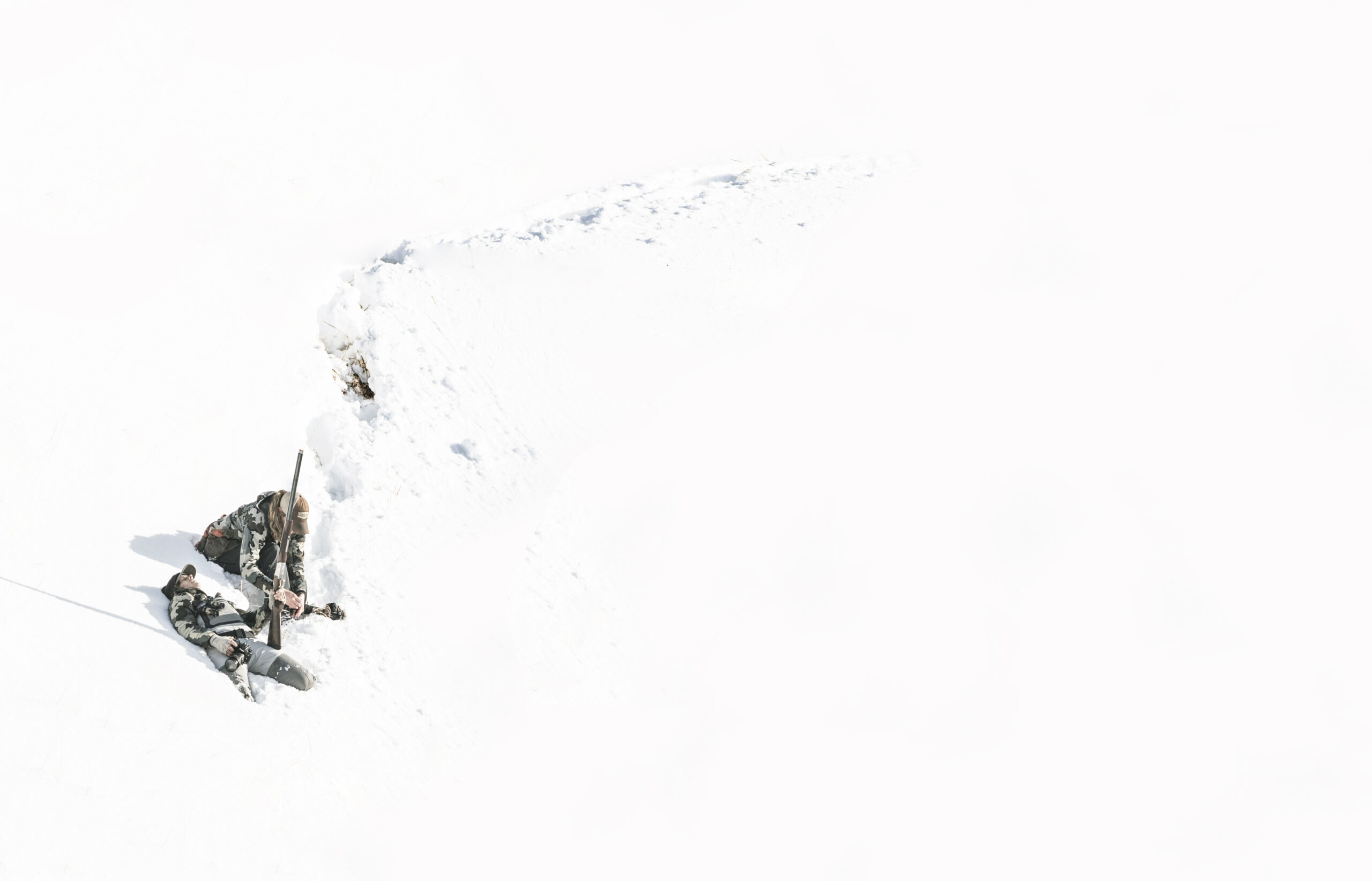A SHOTGUN BLAST echoes dully down the mountainside, muffled by the snow-covered slope. Something white tumbles from the rocks at the summit and gathers speed like a snowball.
My buddy Kali Parmley has already hoofed it half a mile straight up, and now she’s running in knee-deep snow to reach the dead ptarmigan before a bald eagle does. After losing one hard-earned ptarm to an eagle, Kali knows she has to haul ass. By the time she gets ahold of the bird, she’s retching. That echoes too.
Lower 48ers tend to think of Alaska as a frozen wasteland with subzero temperatures and snow stacked to the rooftops in winter. That’s true in certain parts of the state, but not here. As one of the volcanic islands that make up Alaska’s archipelago, Adak is on roughly the same latitude as Vancouver Island. Rain is constant, but this much snow is abnormal.
Hunting ptarmigan is surprisingly fun if you enjoy punishing yourself. But we came all the way to Adak to hunt ducks, and I can’t help watching for them. We can see the harbor spread out blue and frigid beneath us; beyond, the north Pacific. There’s a raft of canvasbacks near the snowed-in boat ramp and harlequins whizzing low across the waves. There’s no sea ice to speak of, and conditions are calm, for now. It’s not that the ducks aren’t here. We just can’t get to them.
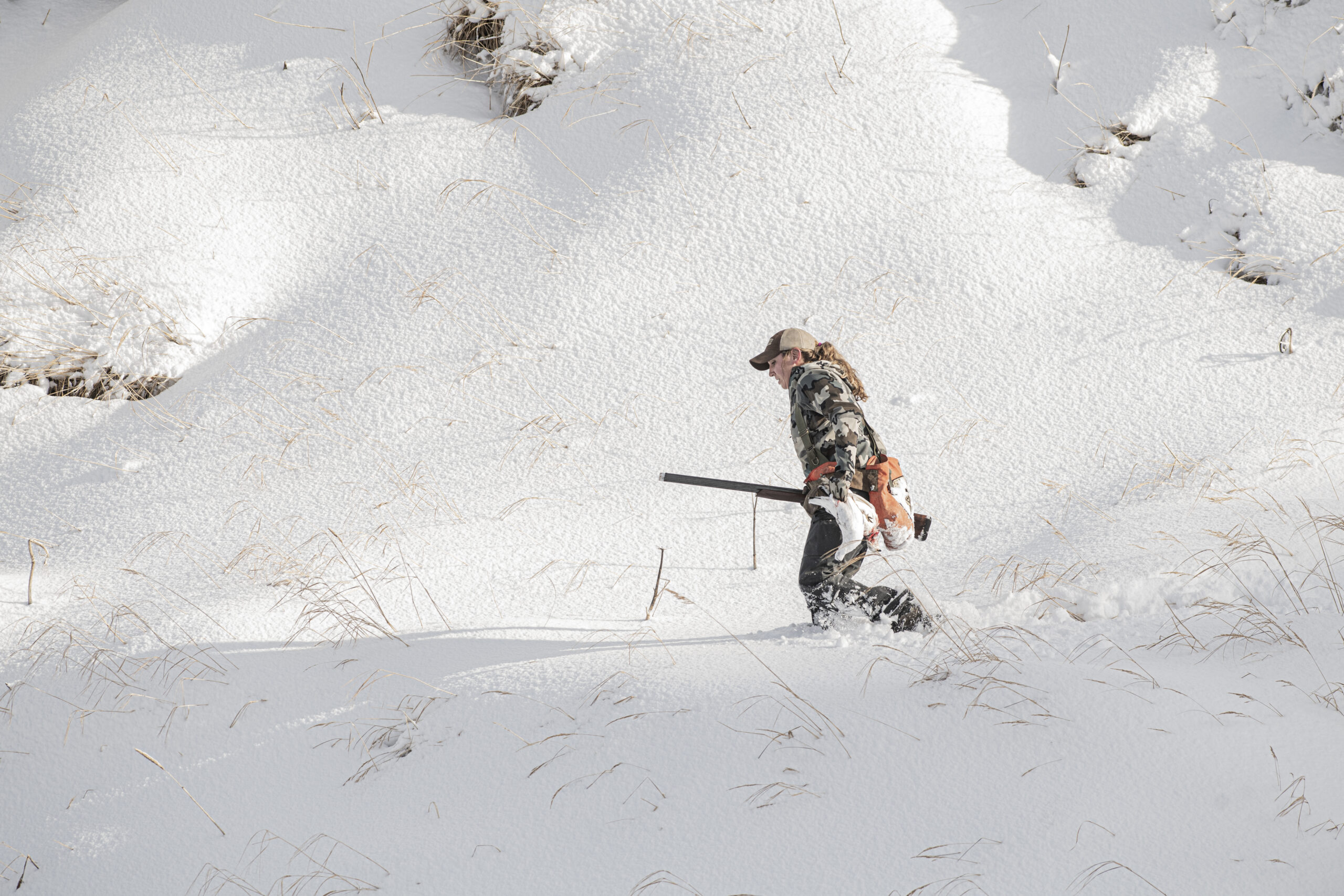
The Rise and Fall of Adak Island
Adak has never been easy to reach. Even though humans crossed the Bering Land Bridge from Asia some 15,000 years ago, they didn’t discover Adak until roughly 12,000 years after the crossing—sometime around 1,500 BCE. That migration was spurred by a natural climate shift, one that eased storms and encouraged ancient Aleuts to island-hop farther and farther out to sea. The more tolerable weather also attracted more birds, which were an important food source for the islanders.
In typical fashion, things went to shit for locals when the Europeans arrived. In 1741, during Danish explorer Vitus Bering’s great northern expedition to Siberia and the Arctic, one of his ships anchored off Adak’s coast and the crew went ashore. Reports from the Bering expedition sent waves of otter trappers and traders to the island, swamping Adak with violence and disease.
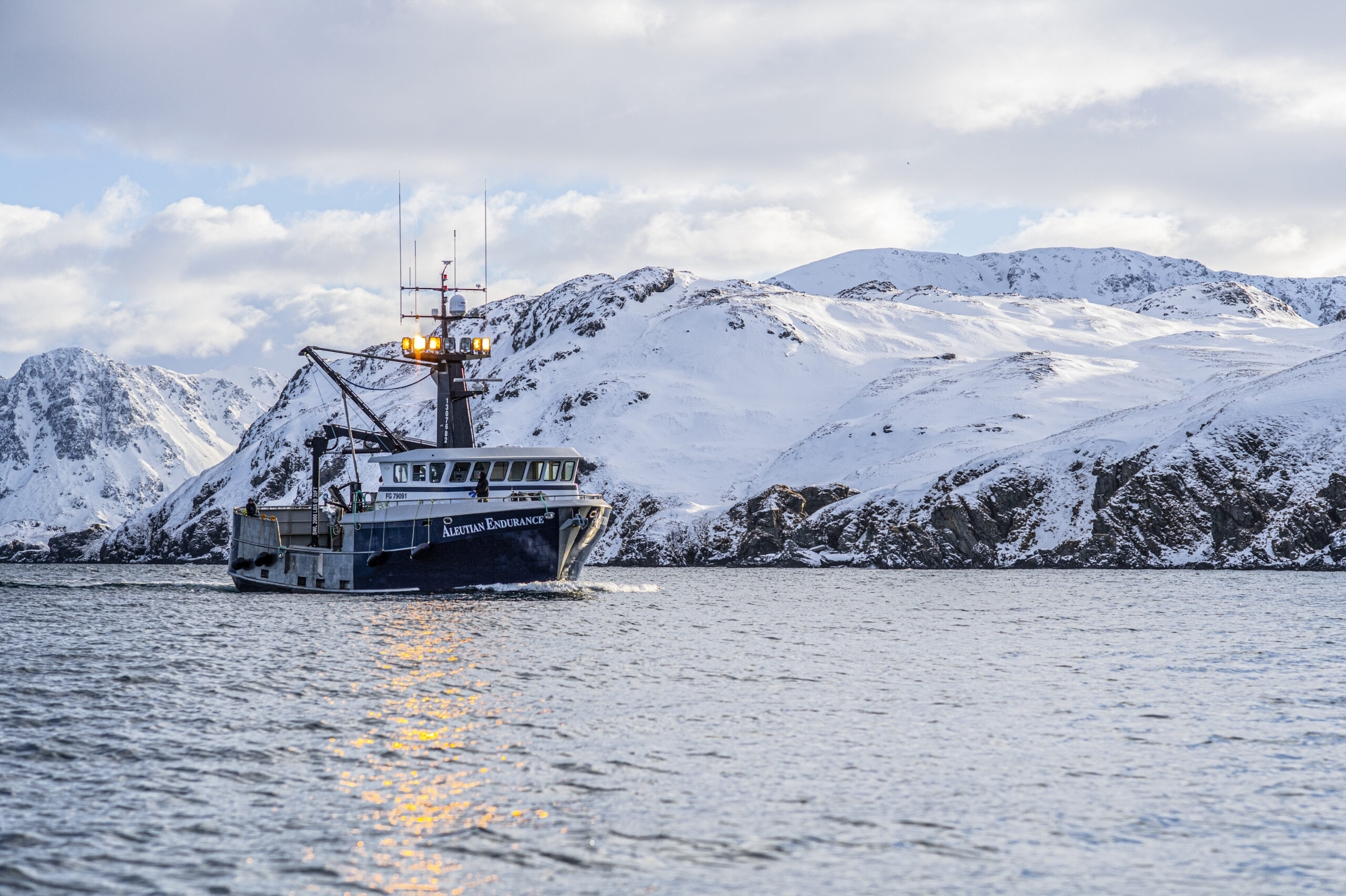
The biggest transformation to the island wasn’t born of opportunity but of necessity, when World War II enveloped the Pacific. In the first occupation of U.S. soil since the War of 1812, the Japanese invaded Alaska’s westernmost islands, Kiska and Attu, in June 1942, as part of the pivotal Battle of Midway. That August, some 4,500 U.S. military personnel descended on Adak. Army Corps of Engineers crews transformed the landscape near the harbor—building a dike to dry the floodplain and a runway from which to launch airstrikes on the occupied islands—in just 10 days.
By 1950, Adak had become a key communications base for the Cold War; it held the only major airfield in the Aleutians and the main U.S. naval base in the north Pacific. Caribou were introduced for hunting opportunities and as an emergency food supply. The human population peaked in the 80s, with some 6,100 residents and the infrastructure to support them: a thousand housing units for families, schools, the world’s westernmost post office, a bowling alley, and even a McDonald’s. But almost as soon as Adak boomed, the Communist regimes in Eastern Europe fell. The naval base was decommissioned in 1995, and the resident population has dwindled.
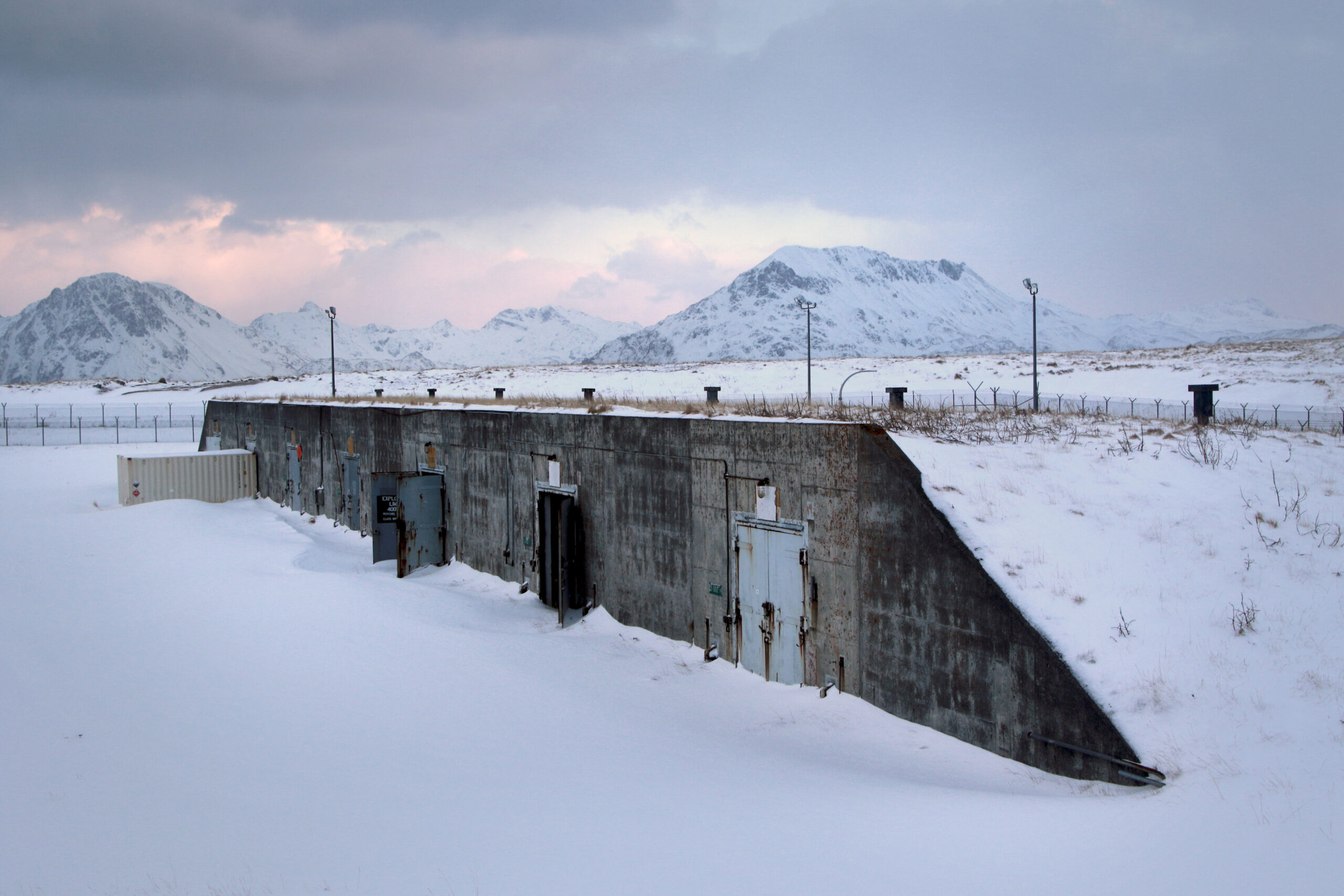
Birthplace of the Winds
The decommissioned airfield is where we touch down in a commercial jet, four days after our first attempt. We initially tried to land in a stiff crosswind that locals called “mild” and the Texas-based pilot called “dangerous.” Our mostly empty plane swooped low enough for a view of squat military houses before pulling up, wings straining against the storm.
This is the westernmost inhabited place on the planet. The sign that greets us at the tiny terminal reads, “Welcome to N.A.F. Adak, Alaska: Birthplace of the winds.”
Kali and I are traveling with our buddies from BOSS Shotshells: Zach Meyer, Luke Kjos, and cofounder Lee Kjos. This is the Kjoses’ second visit to Adak, and they greet the guys at Aleutian Outfitters like old friends.
The abundance of Alaska is legendary, and Adak is no exception. While the ducks arrive in droves, hunts here aren’t measured in numbers. Cory Herendeen, one of the owners of Aleutian Outfitters, explains this as he maneuvers the Sea Osprey through the early-morning chop. He gets excited about hunters who’ve been dreaming about taking home a drake harlequin, brightly banded as a clown fish, or a common eider, whose sloping tuxedo head tinged with mossy green is anything but common.
On our first hunt, Cory drops us in a cove near the harbor amid jagged rocks and sloshing surf. The birds trickle in, and I’m slow with my swing. I see instant confirmation that I’m behind as my shot throws up a spray of seawater behind a harlequin.
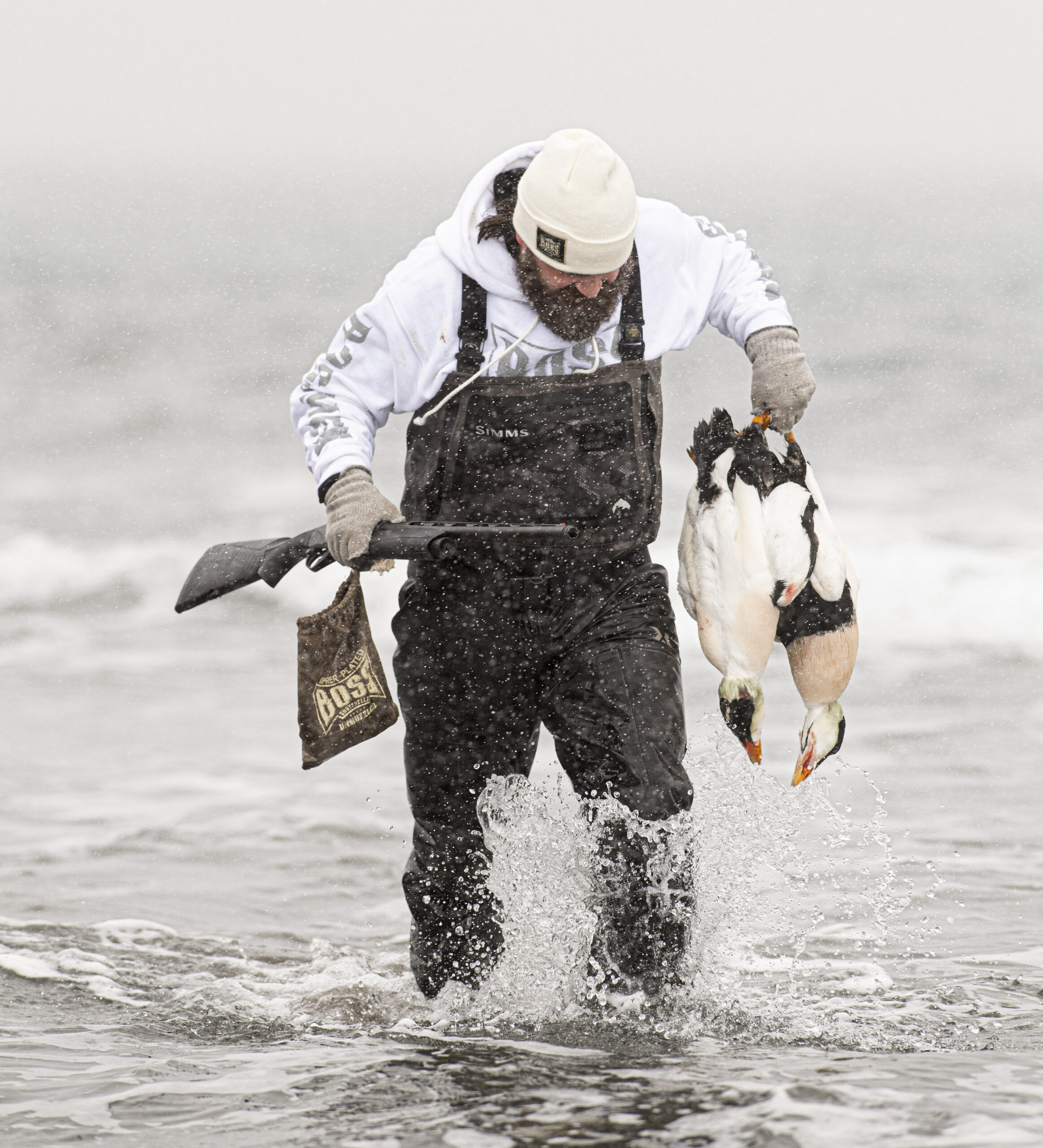
Zach stones a stud harley drake, and I shoot a tufted duck, which resembles a bluebill with a ponytail. There are traditionally 41 species of huntable waterfowl in North America. But since we’re closer to Russia than mainland Alaska, many ducks that don’t make the list come through the Aleutians, including Eurasian wigeon and emperor geese.
It’s a good thing we’re not fussed about numbers, because we’re at the mercy of luck and weather. The winds and snow pick up, making the sea too rough for boat travel. Instead, we pile into the trucks to hunt a sheltered lagoon. Buffleheads bomb in, and greater scaup too. We watch a V of emperor geese descend over the bay toward another group of hunters, several of whom have tags. The emperors land short, and no shots boom across the flat.
Related: Benelli’s Super Black Eagle 3 Is Now Offered in 20-Gauge and 3-Inch 12-Gauge
Only once is it calm enough to motor out to the strait that connects the Pacific and the Bering Sea. There’s a lone caribou standing on the shore where we plan to set up, and Cory scrambles for the rifle he keeps belowdecks. Extra mouths in camp—hunters grounded due to the weather—are straining his food supplies, and we could use the meat. The cow looks disinterested, and Cory gets into position. Just as he squeezes the trigger, a wave rocks the boat and throws his shot. The caribou ambles off, unperturbed.
We drop our gear in the inflatable dinghy and stretch out on the gray egg-size rocks along the beach. Kali kills a beautiful harlequin that falls into the painted wooden blocks, and we endure the deep, humid chill for a few more slow hours. The sunshine is the only thing that keeps us from freezing.
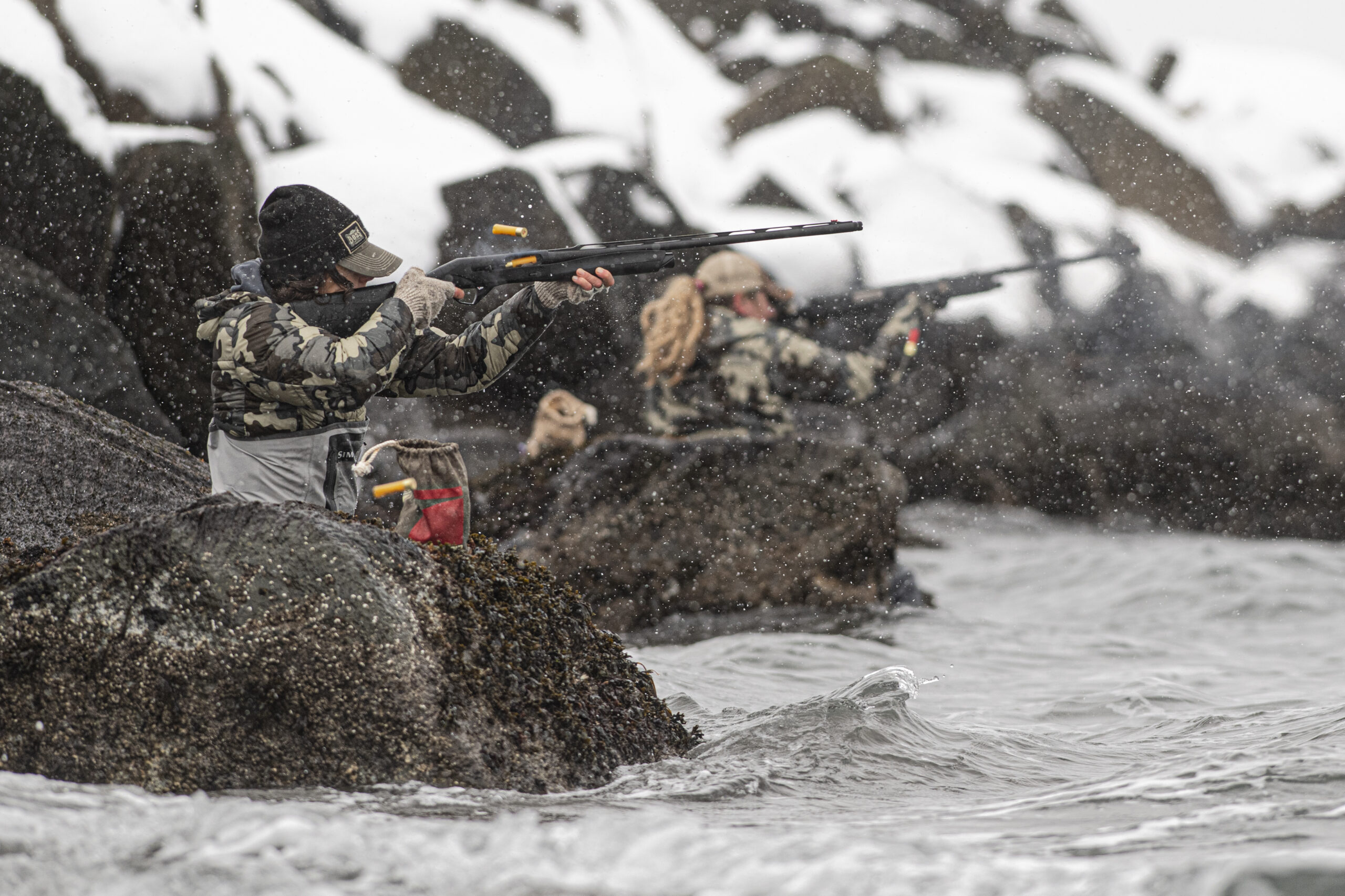
Climate Change Is Helping—and Hurting—Waterfowl
Increasingly erratic weather patterns are unfolding across the planet, manifesting in ways both subtle, like unusual snowfall, and dramatic, like rapidly receding glaciers. Some places are resilient, but Alaska is patient zero for climate change in North America: It’s warming faster than any other state.
On average, the global temperature has risen by 2.12 degrees since the late 19th century; the seven most recent years have been the warmest, with 2016 and 2020 tying for the hottest on record. Those two degrees are negligible when you’re trying to decide which layers to wear for your morning hunt, but they have huge—and frequently negative—implications for everything from rising sea levels to thawing permafrost.
Climate change isn’t all bad, but it is complicated. In the case of many waterfowl populations, for instance, that warming is paying dividends. In the 1950s, Alaska provided 1 to 3 percent of the continental waterfowl breeding population. Now it’s upward of 15 to 18 percent, says Dr. Fritz Reid, the director of boreal and arctic conservation for Ducks Unlimited. This is because many parts of those boreal wetlands are thawing, opening up nesting habitat. And when it comes to ducks, success breeds success: Hens will return to nest where they were born.
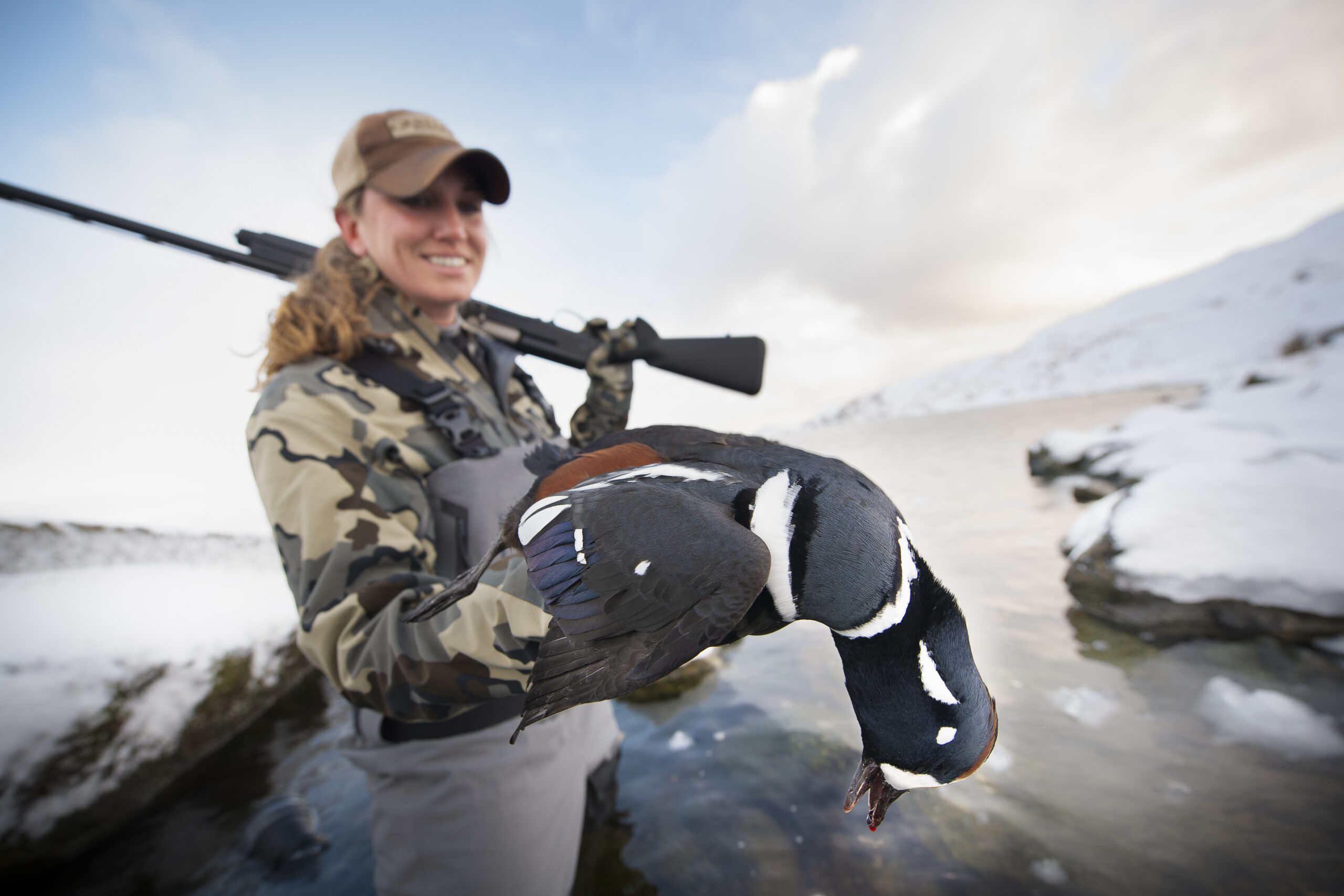
Sea ducks, however, are declining, and at an alarming rate. Three species of scoters have declined some 80 to 90 percent since the 1950s, says Reid, noting that eiders and long-tailed ducks are in a slump too. It isn’t fast enough to cut bag limits anytime soon, but the trend is concerning. Worse, perhaps, is that researchers don’t know why. Many sea duck populations are still not very well understood. It’s tough for humans to reach their breeding and wintering grounds so the ducks can be counted, and researchers aren’t exactly sure what they get up to out at sea.
One of the prevailing theories is rooted in the warming oceans. As ice shelves melt, sea ducks have fewer spots to loaf and dive for forage during migration and wintering periods. Marine life is changing rapidly in the Bering Sea too, which means traditional forage is disappearing faster than some species can keep up.
Issues like declining sea duck populations and vulnerable habitat weigh on Lee Kjos, an old-school waterfowler. Preventing those problems is a core tenet of the BOSS business.“In the end, if anything I do doesn’t help habitat or conservation, it’s no fucking good,” says Lee, explaining why he offers only nontoxic shot and will never make a lead load. Even though lead loads are perfectly legal for most upland hunting, he doesn’t have any interest in introducing more lead to the landscape. Lee also cares about the shots hunters take. He read once that hunters cripple between 3.4 million and 3.7 million ducks a year. If more hunters exercised more self-restraint, he says, think how many birds we could send back to the nesting grounds each year.
This is just one proposed solution to address a complex problem. But it’s also difficult to change the minds of folks who are set in their ways. The effects of a short-term decision—to shoot a duck, to dike a floodplain—can endure long after the choice is made, and forgotten.
Adapting to Adak
“Hey, Scott,” a voice crackles over the radio. “Whatcha doing up there?”
Scott Bullock, Cory’s business partner, picks up the walkie-talkie. “Oh, just taking in the view.”
Scott, who was attempting to plow the bombproof Expedition through the deep snowdrifts above the old naval base, has gotten stuck. Again. The squalls have dropped another foot on the island and whipped deceptively deep drifts over the roads. Where most men would back off, Scott keeps trying to forge ahead, determined to give us one good bird hunt. We’ll dig out the trucks a dozen times in the week we’re on Adak.
The radio beeps. “We’re going to the power plant to see if there’s any ptarmigan over there.”
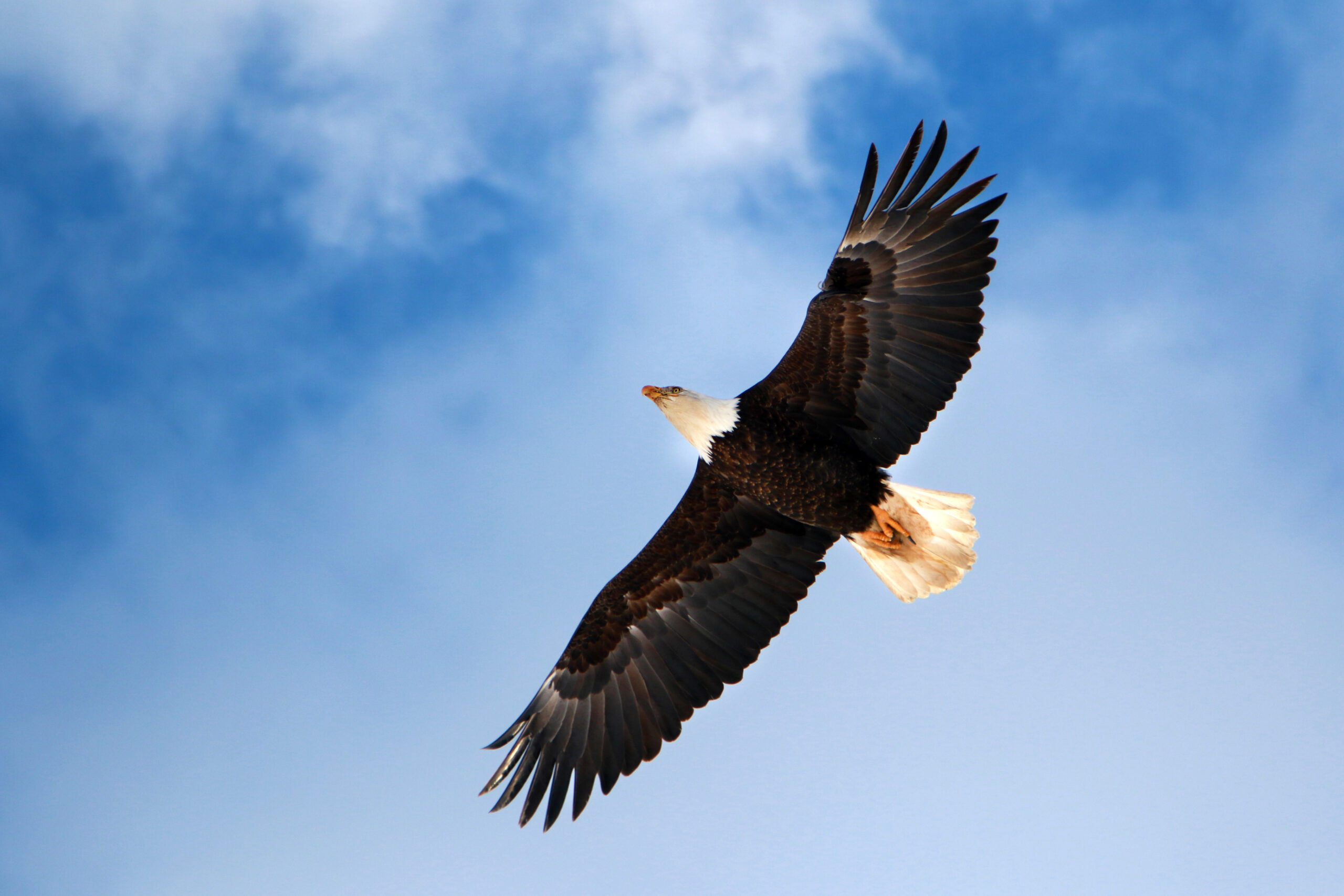
Our crew can drive—barely—on some of the flatter roads around town, but trailering the boat to the icy, unplowed ramp is out of the question. We get to duck hunt just three mornings. It’s tempting to lounge in the warmth of camp for the rest of the day, wader boots on the heaters, but Kali and I get antsy. Even if we can’t hunt ducks, or drive to the best spots, we can roam the island on foot. I have a caribou tag, and she has her Citori. The two of us strap on our gaiters and pile into the Expedition every day after lunch, greeted each time by the only tape in the cassette deck: Nirvana’s Nevermind.
Chamberlain’s rock ptarmigan go through boom-and-bust cycles, and we’re lucky to have hit an abundant year. Even so, we’d need a lot more stamina to fill the daily limit of 20 birds per person. Especially with thieving eagles around. The first time it happens, I hear a shot, then cussing. I spin around to see an eagle flapping off and Kali, who has always loved bald eagles, hollering after it: “Screw you, you magnificent bastard!”
After that, I tackle my next ptarmigan, diving down the mountain after it and somersaulting into the snow. One day we go straight from the boat ramp, which is how I end up hiking three miles in a pair of Orvis waders. Kali and I get caught in a blizzard, the kind of squall that howls down the mountain and out to sea, lashing ice against our faces. A minute later, it clears. Our afternoons blur into a routine of chasing birds, listening to Nirvana, and pushing trucks out of the snow.
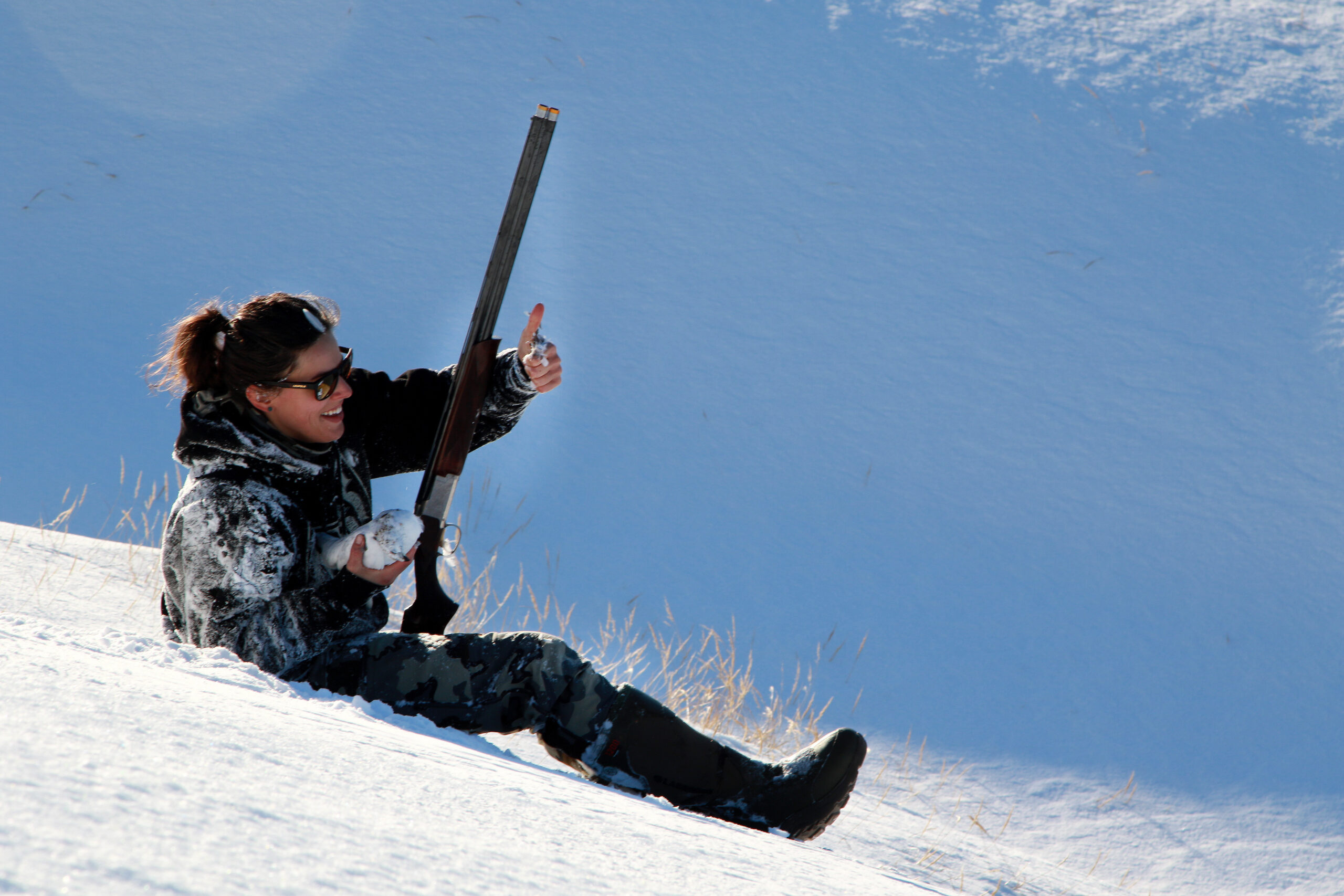
The Natural Order
In the years since the base was decommissioned, the caribou herd has exploded because of fewer hunters and no natural predators. Scattered near the base are abandoned hangars, supply warehouses still packed to the ceilings with goods, and fenced-off swaths of tundra, posted with signs warning of unexploded ordnance and asbestos hazards. Adak is an EPA Superfund site, and although cleanup is winding down, that process is expensive and ongoing. The government has removed all the buildings it ever plans to, and the landscape will remain interrupted by concrete, landfills, and ordnance.
Driving down the main drag of the old naval base is like touring a ghost town, with deserted blocks of barracks and a lone clapboard church. The emptiness of it all is both eerie and depressing; the once-critical base now feels like a wanton waste of money and materials. Locals, at least, will come strolling through the warehouses as they’d visit a Lowe’s, searching the aisles for useful items. Scavenging isn’t exactly legal, since all the buildings belong to the Aleut Corporation now, but it doesn’t seem wrong either. If you’re out in the middle of nowhere with limited resources, and available goods are rotting, they reason, why not salvage them?
With its infrastructure from the mid-20th century, the inhabited parts of the island seem to be falling apart. Yet the human presence is indelible. It feels as if everything we’ve abandoned will be here until the end of time.
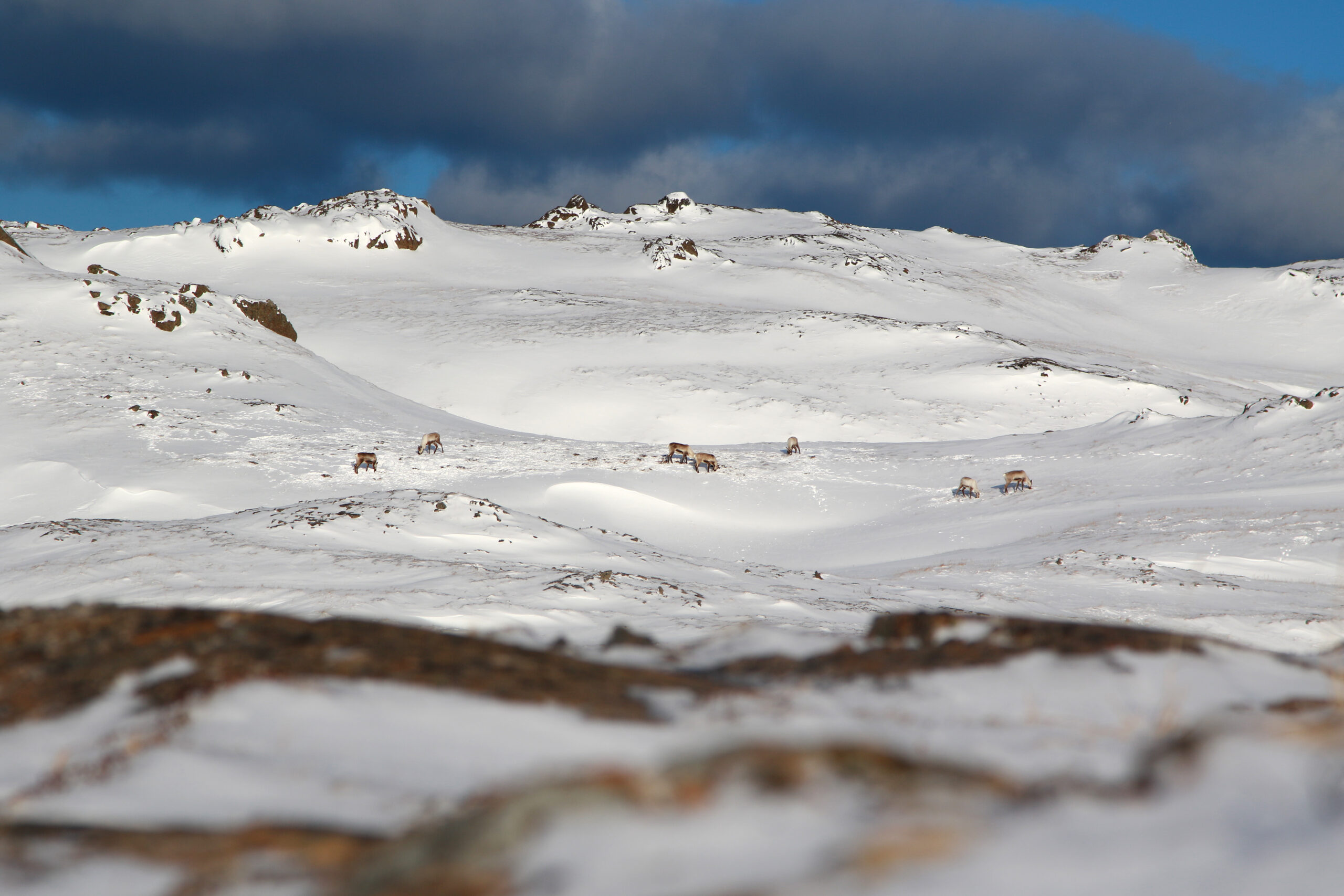
The nonnative caribou aren’t going anywhere either, although I’m not upset about it. Late one day Kali and I spot a herd feeding on the far side of the lake. We swap her shotgun for my rifle and wade into the snow-choked grass again, sinking to our waists in spots. It takes longer than it should to close the two miles, but at least the wrinkled terrain hides us. When I finally get into position, 180 yards away, all the caribou are bedded, except for one cow on the edge of the group. Her rump is pointed at me, and I watch from my belly for 20 minutes as the sun sinks and my hands grow numb in the wind. At last she turns, and I squeeze the trigger.
The cow tears down the hill and out of sight, slipping into a ditch. I grab my pack and my rifle and hustle toward the spot. I doubt I’ll need a follow-up shot—I mostly just want to warm up.
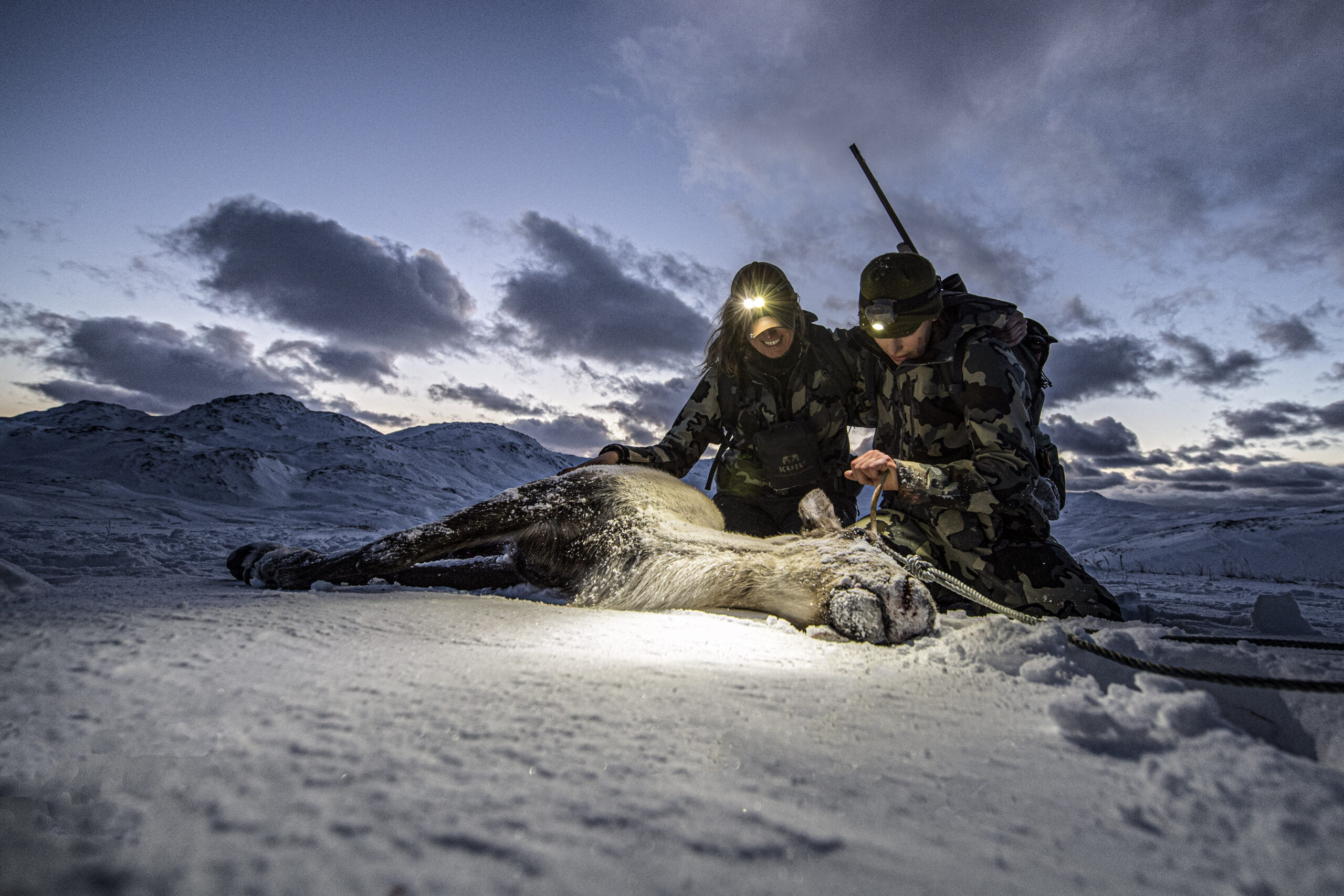
Kali keeps me company while I gut the cow, the tension of our frozen stakeout melting away. We slip a rope around her thin horns and start plodding back to the road. Bald eagles are perched on the rocks nearby, attracted by the sound of the rifle shot. At least the caribou is too big to snatch out from under us.
Adak has been subject to the whims of humanity, but it will always keep its wildness. The island’s cutting winds and rugged shores might be brutal, but they’re not cruel. There is no malice in the theft of a bird or melting sea ice, just as there is no malice in keeping a cod or shooting a caribou. There are only survival and death. I consider this as I lean into the rope, heaving the cow away from the guts. I removed the heart and the liver, a thrifty gesture that did little to reduce the pile of steaming entrails littered in the snow. But waste is anathema to nature, and the impatient eagles are circling above now, waiting for us to leave this place.
This story originally appeared in the Alaska Issue of Outdoor Life. To read the whole issue, find it on Apple News+ or our app. Read our guide on how existing subscribers can access their digital issues. Or check out more OL+ stories.
